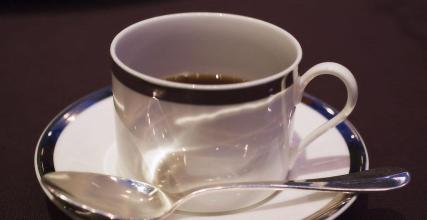A brief introduction to the Origin, Development, History and Culture of Fine Coffee beans in Fenghuang Manor

Coffee was introduced into Costa Rica from Cuba in 1729. Today, its coffee industry is one of the well-organized industries in the world, with a yield of 1700 kg per hectare. Costa Rica has only 3.5 million people but 400m coffee trees, and coffee exports account for 25 per cent of the country's total exports. Costa Rica's volcanic soil is very fertile and well drained, especially in the central plateau CentralPlateau, where the soil consists of successive layers of ash and dust. Costa Rica was therefore the first country in Central America to grow coffee and bananas for commercial value. Coffee and bananas are the country's main exports.
The research center, located about 30 kilometers northeast of San Jose, the capital of Costa Rica, belongs to the Costa Rican Coffee Association and is a national coffee species in Costa Rica.
The newly developed villa sarchi planting, breeding and quality inspection research institutions, in addition, it also has 10 hectares of experimental plots, planting a number of excellent varieties. Coffee is Costa Rica's main agricultural product, with an annual output of more than 2 million bags (60 kilograms) and foreign exchange earnings of 250 million US dollars, second only to pineapples and bananas.
All the coffee trees planted in Costa Rica are Arabica coffee trees. through improvement, the quality of coffee beans is better and more stable. in order to facilitate picking, coffee trees are kept at a height of about 2 meters through continuous pruning. The coffee that people eat is the taste of the seeds in the fruit that are brewed in water. After picking raw coffee beans, the seeds (that is, coffee beans) can be roasted only by peeling, pulp, seed film and sun exposure. now part of the process can be replaced by machines, and the speed of coffee production has increased a lot. However, there is no machine to do coffee picking. We must use manual work, the most famous of which is mountain Costa Rican coffee, which tastes mellow and neutral, and it can be boiled directly. Or mixed with other kinds of coffee beans into mixed coffee, is also a good choice.
Other kinds of Brazilian coffee, such as Rio and Parana, can be produced in large quantities because they do not require too much care. Although the taste is rough, it is a kind of high-quality and inexpensive coffee, which has its own standards because it is distributed all over the country and varies in quality (NO.2--NO.8 according to the number of sundries, NO.13--NO.19 according to the size of beans, and six grades according to taste). Almost all Arabica varieties are of good quality and stable in price. The most famous one is Costa Rica, which has been a necessity of blended coffee and is familiar to the public since ancient times.
Excellent Costa Rican coffee is called "extra hard beans". This kind of coffee can grow above 1500 meters above sea level. Altitude has always been a problem for coffee growers. The higher the altitude, the better the coffee beans, not only because the higher altitude can increase the acidity of the coffee beans and thus increase the flavor, but also because the night temperature at the higher altitude is lower, which can make the trees grow slowly, thus the flavor of the coffee beans is stronger. In addition, due to the high altitude drop caused by sufficient rainfall, it is very beneficial to the growth of coffee trees. However, its negative effect is to increase additional transportation costs, which is likely to make coffee production unprofitable. The coffee industry in Costa Rica has adopted new technologies to increase efficiency, including using "electric eyes" to select beans and identify coffee beans of irregular size.
Costa Rica is located in the Central American isthmus, belonging to North America, latitude 10 °north, longitude 84 °west. It is bordered by the Caribbean Sea to the east and the North Pacific Ocean to the west, with a coastline of 1290 km (212km on the east coast and 1016 km on the west coast). Costa Rica borders Nicaragua in the north (309 km long border) and Panama (639 km long border) south-southeast. There are a total of 51100 square kilometers, of which the territory is 50660 square kilometers and the territorial sea is 440 square kilometers, which is slightly smaller than West Virginia in the United States. it is equivalent to Ireland and Costa Rica, which accounts for only 0.03% of the world's land area, but has nearly 4% of the world's species. is one of the countries with the richest biological species in the world. 26% of the land area is a national park or nature reserve, including 11 wetlands, 2 biological reserves and 3 World Natural Heritage sites. The national forest coverage rate is 52%. It is called the Legislative Assembly, the unicameral system, the Barber Congress, the exercise of legislative power and other important functions and powers. Major government decisions need to be examined and approved by the Legislative Assembly, which is called the "first power" of the country. It is the highest legislature in the country and consists of 57 members. Members are directly elected by voters for a term of four years and are non-re-elected. The current Legislative Assembly was formed in May 2010. the new Legislative Assembly was elected on February 2, 2014. the election results are as follows: 18 seats for the ruling National Liberation Party (PLN), 12 seats for the Civic Action Party (RAC), 4 seats for the Free Movement Party (PML), 8 seats for the Christian Social Solidarity Party (PUSC), and 1 seat for all the people to join the Party (PASE). Broad Front Party (FA) 8 seats, National Reform Party (RN) 1 seat, Costa Rican Reform Party (RC) 1 seat, Christian Democratic Union (ADC) 1 seat and 2 independent parliamentarians. The current chairman is Luis Fernando Mendoza Fernando Mendoza Jimenez of the National Liberation Party, who was elected in May 2013 for an one-year term. On May 1, 2014, the Legislative Assembly completed the transition of the coffee beans produced in the high latitudes of Costa Rica, which are famous in the world, full-bodied, mild in taste, but extremely sour, and the coffee beans here have been carefully processed, which is why there is high-quality coffee. Tarasu, located in the south of SanJos é, the capital of Costa Rica, is one of the most important coffee growers in the country. Tarrazu is one of the major coffee producing areas in the world. Coffee was introduced to Costa Rica from Cuba in 1729. Today, its coffee industry is one of the well-organized industries in the world, with an output of 1700 kg per hectare. Costa Rica has only 3.5 million people but 400m coffee trees, and coffee exports account for 25 per cent of the country's total exports.
Costa Rica's volcanic soil is very fertile and well drained, especially in the central plateau CentralPlateau, where the soil consists of successive layers of ash and dust. Costa Rica was therefore the first country in Central America to grow coffee and bananas for commercial value. Coffee and bananas are the country's main export commodities Costa Rican coffee is full of particles, ideal acidity and unique strong flavor. Costa Rica's coffee industry, originally controlled by the Costa Rican Coffee Industry Company (ICAFE), has been taken over by the official Coffee Committee (Oficinale Cafe). Among the exported coffee, those products that are considered to be of substandard quality are colored with blue vegetable dyes and then transferred back to China for sale.
Coffee consumed domestically (dyed blue or undyed) accounts for about 10% of total production, and local per capita coffee consumption is twice that of Italy or the United States. Costa Rican coffee is full of Arabica beans, washed with water, its style is bright and fragrant, as clear as wind chimes swaying in the breeze, and mild acidity and sweetness. Because of the sweetness, even if the coffee gets cold, it tastes very good, which is a major feature of Costa Rican coffee. Therefore, it is recommended that you taste Costa Rican coffee with only a small amount of sugar and cream in order to enjoy its girlish flavor Tarasu is located in the south of the country's capital, SanJos é, and is one of the country's most valued coffee growers. LaMinitaTarrazu coffee is a famous local product, but its production is limited, about 72600 kilograms a year. It is grown on a piece of land called LaMinita, which is owned by nearly three generations of the McAlpine family in the UK. In fact, this land can produce more than 450 tons of coffee a year. However, the cultivation of Tarasu Latin American coffee does not use artificial fertilizers or insecticides, and its harvest and selection are all done by hand, in order to avoid the damage to coffee beans caused by air spray selection to some extent.
Important Notice :
前街咖啡 FrontStreet Coffee has moved to new addredd:
FrontStreet Coffee Address: 315,Donghua East Road,GuangZhou
Tel:020 38364473
- Prev

A brief introduction to the fresh and full-bodied Fine Coffee Bean Flavor and Flavor
The research center, located about 30 kilometers northeast of the Costa Rican capital San Jose, belongs to the Costa Rican Coffee Association and is a research institution for villa sarchi planting, breeding and quality inspection newly developed by Costa Rica's national coffee breeds. in addition, it also has 10 hectares of experimental plots, planting a number of excellent varieties. Coffee is the main agricultural product in Costa Rica, with an annual output of more than 2 million bags
- Next

A brief introduction to the Market Price of Fine Coffee Bean varieties in Huofenghuang Manor treated with Yellow Honey
Coffee consumed domestically (dyed blue or undyed) accounts for about 10% of total production, and local per capita coffee consumption is twice that of Italy or the United States. Costa Rican coffee is full of Arabica beans, washed with water, its style is bright and fragrant, as clear as wind chimes swaying in the breeze, and mild acidity and sweetness. Because of the sweetness, even if the coffee changes
Related
- Does Rose Summer choose Blue, Green or Red? Detailed explanation of Rose Summer Coffee plots and Classification in Panamanian Jade Manor
- What is the difference between the origin, producing area, processing plant, cooperative and manor of coffee beans?
- How fine does the espresso powder fit? how to grind the espresso?
- Sca coffee roasting degree color card coffee roasting degree 8 roasting color values what do you mean?
- The practice of lattes: how to make lattes at home
- Introduction to Indonesian Fine Coffee beans-- Java Coffee producing area of Indonesian Arabica Coffee
- How much will the flavor of light and medium roasted rose summer be expressed? What baking level is rose summer suitable for?
- Introduction to the characteristics of washing, sun-drying or wet-planing coffee commonly used in Mantenin, Indonesia
- Price characteristics of Arabica Coffee Bean Starbucks introduction to Manning Coffee Bean Taste producing area Variety Manor
- What is the authentic Yega flavor? What are the flavor characteristics of the really excellent Yejasuffi coffee beans?

